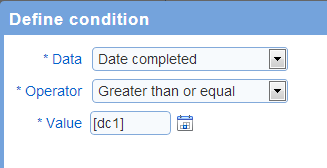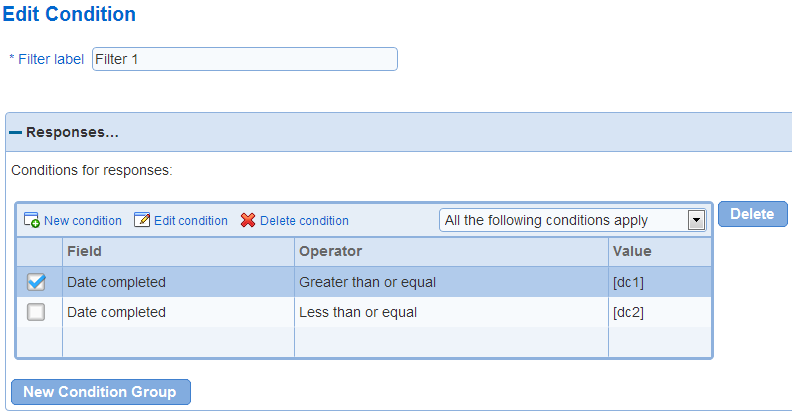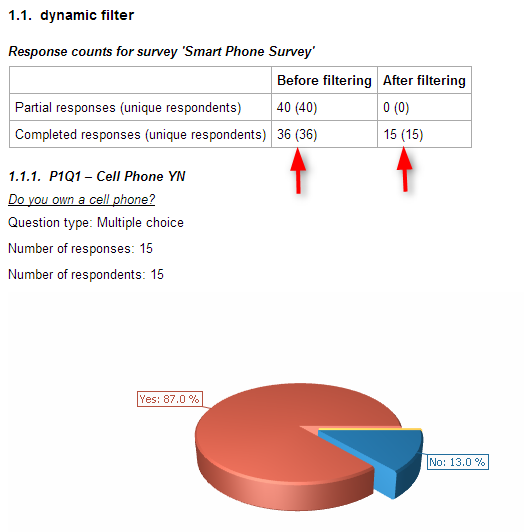|
Dynamic Conditions
|   |
Dynamic conditions are conditions where threshold values for the conditions is specified as parameters on the URL rather than being defined as part of the condition.
For example, consider a report where responses should be filtered by date completed within a range. When creating the conditions on the response date completed, the value for the condition (i.e., the date) can be specified as a parameter rather than as a real date. In the example below, the date value is set to '[dc1]'.

The condition group on the response data completed include two such condition with the threshold date set to '[dc1]' and '[dc2]'.

Where running the report, values for dc1 and dc2 are specified in the URL:
http://<domain>/ViewReport.aspx?doid=<report id>&dc1=Nov-1-2012&dc2=Nov-14-2012
With these values in the URL (Nov-1-2012 and Nov-14-2012 in the example above), the filter will act on the responses as if the dates were defined directly in the filter.

Dynamic filters can be defined for any condition that uses a textual, numeric, or date value. Examples of use of dynamic filters includes filter on response parameters used to segment the population of respondents and for extracting set of responses based on date as illustrated in the example above.
For all dynamic filters, the format of the parameter to include in the URL is: parameterName=parameterValue where [parameterName] correspond to the value entered in the 'Define condition' pop up and parameterValue is the actual value to use for the condition. The format for parameterValue is the same as if it was defined directly in the 'Define condition' pop up. For dates, the format is MMM-dd-YYYY (month as a 3 letter code, day number in month, year). For numbers, the value should follow standard number specification rule (e.g., 10, -6, or 5.2).